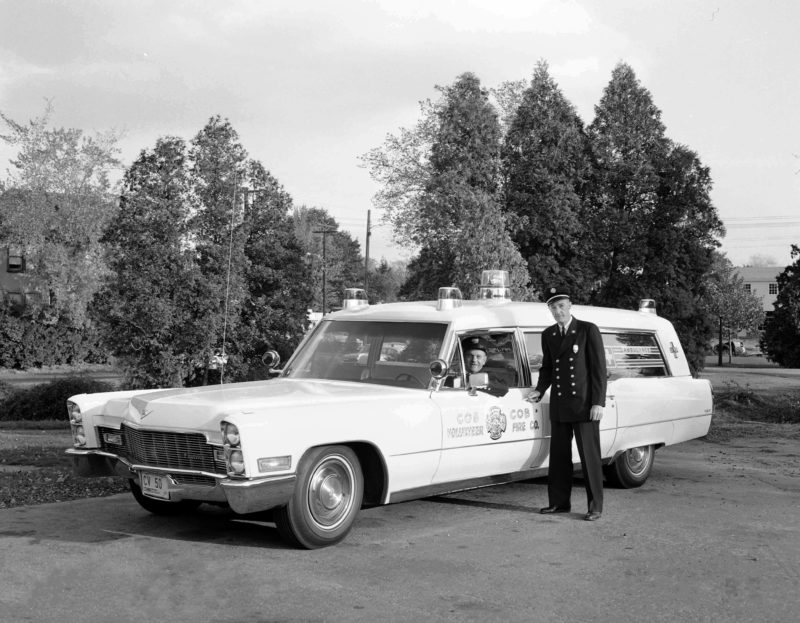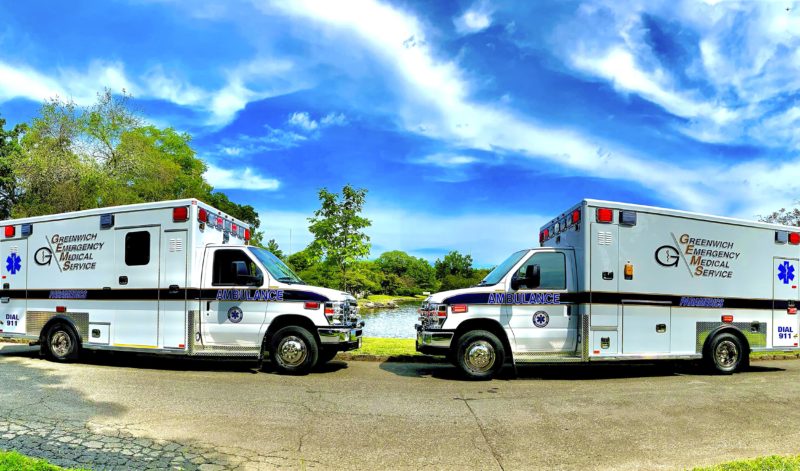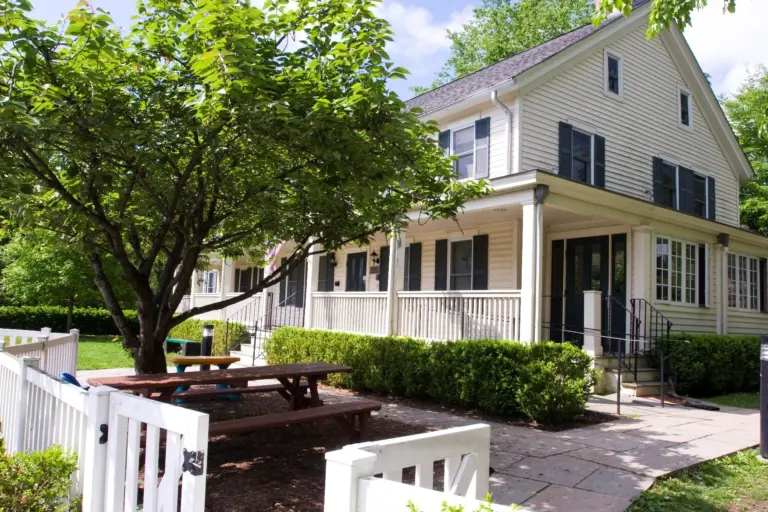Celebrating Fifty Years of The Oral History Project – A History of Emergency Medical Services in Greenwich (GEMS)

By Mary A. Jacobson
Over the years, a trip in an ambulance to the emergency room of the local hospital in Greenwich has changed dramatically. In the earliest days of automotive transport in the 1920s, transportation to the then-Municipal Hospital may have been by a van that was no doubt considered a state-of-the-art vehicle at the time. For many years, ambulances were housed in local fire departments which, in partnership with the police and volunteers, provided needed and fast transportation to Greenwich Hospital.
In 2006, Oral History Project volunteer Marian Phillips interviewed Charlee Tufts, executive director of Greenwich Emergency Medical Services (GEMS), which began service in Greenwich in 1986. Tufts explained that the purpose of GEMS is “to provide Advanced Life Support, paramedic-level ambulance service for the Town of Greenwich.”
Tufts described the early history of ambulance transport in Greenwich: “Ambulance services before firehouses were actually provided by funeral homes, and so you had hearses, and, when it then transferred into the fire departments, there was still the old Cadillac.” By 1976, federal regulations started to identify what an ambulance should look like, and what requirements, equipment, and training were necessary to be as effective as possible.
In 1984, Roger Pearson, First Selectman of Greenwich, supported funding for hiring “an administrative director of EMS for the Town of Greenwich to coordinate and standardize protocols, services, and training… for the type of organization we’d like to see in town.” Charlee Tufts was selected by the town’s Board of Health for this challenge. “I don’t think in your professional life a lot of people have the opportunity to actually develop an entire system.”
As Tufts explained, “Previous to GEMS being founded (in 1986), the ambulance service was at a Basic Life Support level… it was mainly splinting, giving oxygen, bandaging, and controlling bleeding.” What it evolved into (with GEMS) was “the ability to provide just about complete emergency care that you would receive in the Emergency Department. Very sophisticated care…. So, GEMS was the product of two years of study and research.”
This study included an evaluation of six months of emergency calls to determine the breakdown of those cases that would have benefitted from Advanced Life Support (45 percent) including an IV, medication, intubation, defibrillation. “It became abundantly clear that this town was too big to cover with only one station… And so, we started looking not only at response times but at the clusters of where the calls were most predominant. We chose three stations; and, amazingly, those three stations are still in effect today (in 2006).” A fourth, on King Street, is now fully operational as well.
“So we went to the BET (Board of Estimate and Taxation) with a budget, and by that time it had been determined that we really felt that the most cost-effective way to do this was to become a non-profit…I think we were probably the first to be designed like this in the State; and I know we’ve been used as a model outside the State.” This would eliminate another employee base in town; lead to less expensive malpractice insurance; and allow for fundraising.
Tufts recalled that, in the process of seeking RTM (Representative Town Meeting) approval, “Many physicians, particularly the cardiac physicians, would come with us to all the RTM meetings… to explain the system that we were proposing and to support it from their medical standpoint, that this was something very important for the town.” On May 12, 1986, “I thought I’d never forget that date … our budget was voted in by a solid majority of members of the RTM.” Proudly, Tufts recounted, “So GEMS was the product of two years of study, research, presenting budget after budget after budget and with the culmination of going into service July of ’86.”
Recruitment of personnel was not difficult. “We offered a very fair wage and benefits. . . There was also a lot of interest and excitement about a service starting up that was dedicated to just emergency service and to patient care.” Paramedic certification and licensing required “at least a sixteen-hundred-hour course between classroom didactic and practical experience and internships.” Today, all ambulances are staffed with at least one paramedic and an EMT.
Volunteers also continue to play a part in delivering services, “a much smaller number who are actively certified and riding shifts,” many choosing to ride as “thirds” to assist, rather than replace a two-person crew. In addition, there is an active volunteer group of Explorer Post, teenagers who provide help on the non-emergency side and, once qualifications are met, may ride in the ambulance.
Tufts was proud of the fact “that each year we are improving on our technology.” About ten years into the program (in 1996), “Twelve Lead EKGs” were made available which allowed electrocardiograms to be performed on the ambulance and transmitted directly to the Emergency Department enroute to the hospital. Automatic External Defibrillators became available as well and doubled the cardiac arrest save rate. “Our biggest challenge is finding enough room on the ambulance for all the equipment we are carrying.”
According to Charlee Tufts, “We are the third arm of public safety . . . not as an adjunct to other services. And I think as time goes on people are recognizing even more that every call we answer deals with human life and not property, but human life.”
Charlee Tufts retired from her position as GEMS Executive Director in 2017 after thirty-nine years of service with the town’s ambulance corps. That year she was honored by induction into the Connecticut Women’s Hall of Fame. Under her years of leadership GEMS received numerous awards, including being cited as an exemplary system for a “save rate,” ranking GEMS among the best in the nation.
In 2023 GEMS answered 6,517 calls with a 96 percent response time of under eight minutes, including 74 percent of them under five minutes, resulting in 4,323 trips to the emergency room.
The interview “History of the Greenwich Emergency Medical Services (GEMS)” may be read in its entirety at the Main library location. It is also available for purchase by contacting the OHP office. The OHP is sponsored by Friends of Greenwich library. Visit the website at glohistory.org. Our narrator’s recollections are personal and have not been subjected to factual scrutiny. Mary Jacobson serves as blog editor.
The interview “History of the Greenwich Emergency Medical Services (GEMS)” may be read in its entirety at the Main library location. It is also available for purchase by contacting the OHP office. The OHP is sponsored by Friends of Greenwich library. Visit the website at glohistory.org. Our narrator’s recollections are personal and have not been subjected to factual scrutiny. Mary Jacobson serves as blog editor.





